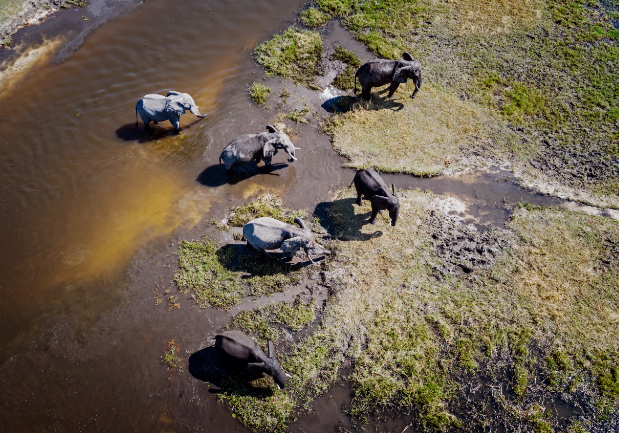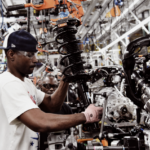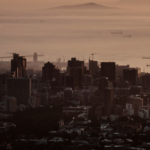In 1953, the hit musical comedy film Gentlemen Prefer Blondes gave rise to an iconic slogan when Marilyn Monroe sang Diamonds Are a Girl’s Best Friend, all while the actress was dripping in one of the world’s hottest commodities.
The phrase still rings true – at least for Botswana, which is home to one of the world’s richest diamond mines by value. The Jwaneng open-pit mine contributes between 60% and 70% of revenue for diamond exploration firm Debswana. In mid-2022, the joint venture between Anglo American’s De Beers and the government of Botswana announced that its rough diamond sales spiked 54% during the first six months of 2022. This was in part thanks to strong jewellery demand from the US and the tight global rough diamond supply. Data published by the central bank indicates that sales from Debswana peaked at US$2.6 billion in the six months to June, compared to US$1.7 billion in the same period the previous year. Debswana, which was established in 1969, three years after the country gained its independence, operates four diamond mines in Orapa, Letlhakane, Damtshaa and Jwaneng.
According to Reuters, the company accounts for most of Botswana’s diamond exports, with the Karowe mine, owned by Vancouver-based Lucara Diamond Corp, being the only other operating diamond mine in the country.
The diamond industry has been a major contributor to Botswana’s economy. About 30% of Botswana’s revenue is derived from diamonds, while the gems also account 70% of the country’s foreign exchange earnings.
Before the diamond boom hit Botswana, the landlocked country had limited economic potential. Its finances were heavily dependent on foreign aid, and most of its citizens were rural and agrarian. The World Bank dubbed it ‘one of the world’s poorest countries at independence in 1966’.
At this time, De Beers had already been exploring for 10 years with no luck in finding diamonds. Then, two months before its dead-line to cease operations, the company struck a kimberlite pipe in the Mochudi area – followed by the discovery of diamonds at Orapa one year later. More recently, diamonds larger than 1 000 ct have been discovered at Karowe and at Jwaneng mine, where a 1 098 ct stone was unearthed in 2021. The latter is believed to be the third-largest gem-quality diamond ever found. And last June, Debswana extended its sales agreement with the government for its rough diamond production until June 2023.
The World Bank reports that today the country’s fiscal revenues are driven by diamond exports, which also replenish the Pula Fund, a long-term investment portfolio operated by the Bank of Botswana.
As per the IMF’s 2022 Article IV Consultation with Botswana, the country has managed to recover to its pre-pandemic output level, thanks to ‘a successful vaccination campaign, prudent macro-economic management, and strong demand for diamonds. Significant mineral [diamond] wealth, good governance, prudent economic management, and a relatively small population of about 2.4 million (as of 2021), have made it an upper middle-income country with an agenda of becoming a high-income country by 2036’.
The IMF expects that the country will be helped on its way by increased copper production, and greater demand and higher prices for diamonds. The latter sentiment is supported by the recent extension of a sales agreement between Lucara and HB Trading for the sale of high-value diamonds from the Karowe mine for another 10 years. Mining Weekly points out that Lucara’s +10.8 ct production is sold at prices based on the estimated polished outcome of each stone.
Lucara CEO Eira Thomas says the agreement will stabilise prices for the production segment. ‘It has demonstrably grown demand, a core objective.’
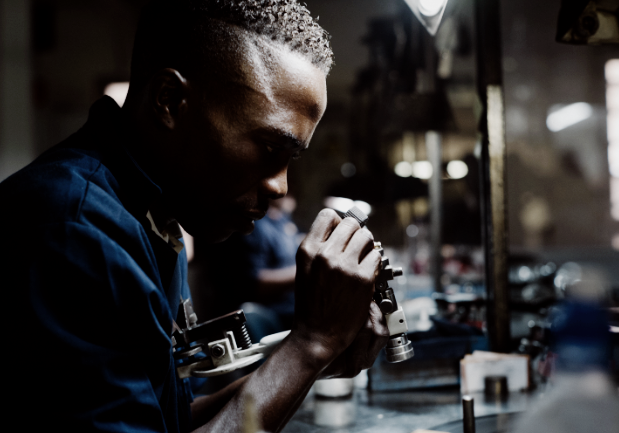
While Botswana’s diamond industry has helped the country develop into one of the world’s fastest-growing economies, challenges remain. The World Bank notes that Botswana’s reliance on the diamond sector, as well as its public-sector driven model, ‘makes the economy vulnerable to external shocks. This vulnerability was evident during the COVID-19 pandemic when the economy contracted by 8.7% in 2020 and fiscal pressures rose’.
As a result, government has expanded its revenue stream by taking on several more projects within its diverse mining industry. These include a 1.4 million ton coal mine inaugurated in 2022. According to African Mining Market, the operation at the state-owned Morupule coal mine (MCM) in Palapye holds an estimated 212 billion tons of coal resources. The open-cast mine is expected to grow MCM’s output by 50%, translating into increased revenue of US$222.6 million in 2023.
Then, in August 2022, global miner Sandfire Resources announced plans to spend an additional US$71.9 million to expand production at its Motheo copper project in Botswana to 5.2 million tons per year. At the time, Karl Simich, then Sandfire CEO, said the company is also pursuing a major exploration campaign near the mine as well across its landholding in the Kalahari Copper Belt, aimed at ‘defining additional ore sources that can feed into our expanded processing hub at Motheo or support the development of new production centres across the region’. Reuters reports that the Motheo project is scheduled for completion this year.
Last year, Giyani Metals Corporation also announced that its K Hill battery-grade manganese project in Botswana could generate US$99 million per year with first commercial production set for 2025. And in November, a high-grade gold deposit was confirmed, with Mining Weekly reporting that London-listed Power Metal Resources had found 47.1g/t gold while drilling in an 8 km-long soil anomaly at its Tati project in the east of the country.
Government is also looking to expand its tourism industry, committing to grow the sector past its almost 10% contribution to GDP, as per the International Trade Administration.
Last year, the Ministry of Environment, Natural Resources Conservation and Tourism of Botswana launched workshops to prepare the National Tourism Strategy and Master Plan for the Kasane-Kazungula area, which will focus on stimulating the recovery of the tourism sector post-COVID-19 as well as the sustainable development of the country. The master plan’s focus areas include product diversification, market intelligence, marketing and branding, environmental issues, community-based tourism and investment facilitation. Oduetse Koboto, permanent secretary in the ministry, says the country needs a strategy that is ‘robust, practical and implementable and which will enable Botswana to become the destination of choice’.
According to Tourism Minister Philda Kereng, the sector has led the country with regard to recovery and setting standards for post-COVID trade. ‘The capacity to recover and start running again has been built. We have to conserve and preserve national resources, on the [basis] of which we are developing and serving products.’
Government’s plans to expand the sector include reserving tourism licences and safari concessions for citizens, and enabling new hotel brands and conference facilities to open. Infrastructure in wildlife-protected areas is continuously being upgraded, and lodges are being opened in national parks.
In May last year, Travel News reported that government had approved plans for the construction of eight lodges inside the Chobe National Park. An expression of interest (EOI) to develop these projects was issued for companies fully owned by citizens and consortia with tourism licences held for more than two years. Government spokesperson Lesego Mesele Kgomanyane noted that each of the country’s protected areas is focused on a park-specific plan for creating economic opportunities for citizen-owned companies.
‘For example, other than the ongoing EOI for Chobe National Park, a total of 41 camp-grounds will be awarded to 100% citizen-owned companies in Kalahari Transfrontier park, Khutse game reserve and Central Kalahari game reserve.’
During the pandemic, Botswana was one of the countries with the highest per capita infection rates in Africa. To mitigate this, government rolled out an aggressive vaccination plan so it could continue to promote the country as one of the safest places to visit. As a result, in 2021, the Global Peace Index report listed it as the third-safest country to visit in Africa.
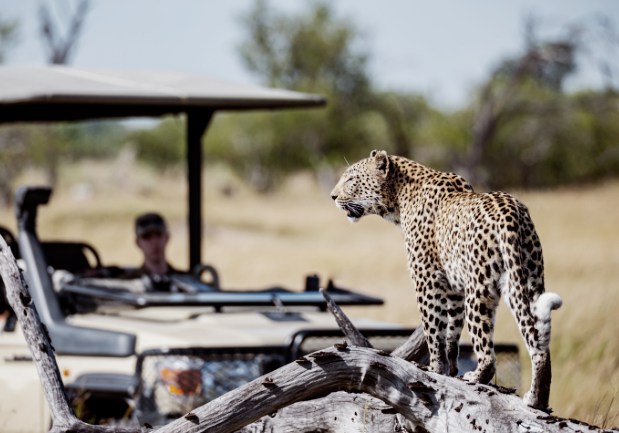
‘The National Vaccine Deployment plan was ready a month before the first vaccines arrived,’ Malebogo Kebabonye, director of health services at the Ministry of Health and Wellness, said at the time. ‘Our first phase, aiming to reach 264 000 [people], is about protecting the health system. The second is to ensure continued economic activity. According to Reuters, about 59.3% of the country’s population had been vaccinated against COVID-19 as of July 2022.
The plan seems to have had the desired effect, with the Statistics Botswana International Visitor Arrivals report recording 158 284 international travellers to the country during the first quarter of last year.
While off the very low base, Botswana posted a startling 12.5% recovery in 2021, the highest growth rate on the continent for the period. The IMF expects growth to continue through the medium term, although at a more moderate pace in the region of 4%. ‘Growth will be supported by higher prices and demand for diamonds, increased copper production, prospects for a good harvest, less COVID-19 mobility restrictions, and more international tourist arrivals. These factors and a strong fiscal adjustment will strengthen buffers, particularly those held by the government.’

